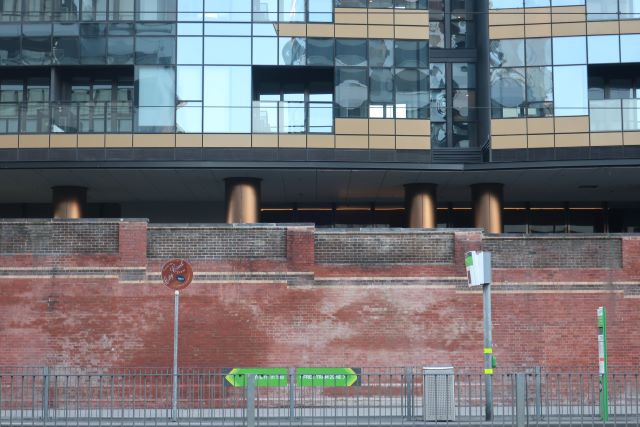
Brick Wall
Even as we’ve returned to the lockdown from which we were tentatively emerging, the finishing touches are being applied to an old part of the city made anew.
Recently, the scaffolding and hoardings were removed from the Flinders St extension west of Spencer St to reveal the heritage listed retaining wall. Every brick has been cleaned of a century of dirt. It is probably cleaner than at any other time since it was built as this was a grimy part of town – full of coal dust from the West Melbourne Gasworks and the Railways.
The Flinders St extension was built in 1895 to connect the city with the newly opened Victoria Dock. Messrs Woodruff and Crosbie built this fine brick polychrome wall, a civic wall. The heritage citation suggests it was an unconscious memorialisation of the former Batman’s Hill which was levelled to make way for Spencer St Station and the railway yards.
As part of the restoration, a bronze plaque has also been revealed and refreshed, just west of the Spencer St railway viaduct, marking the former location of Batman’s Hill and house.
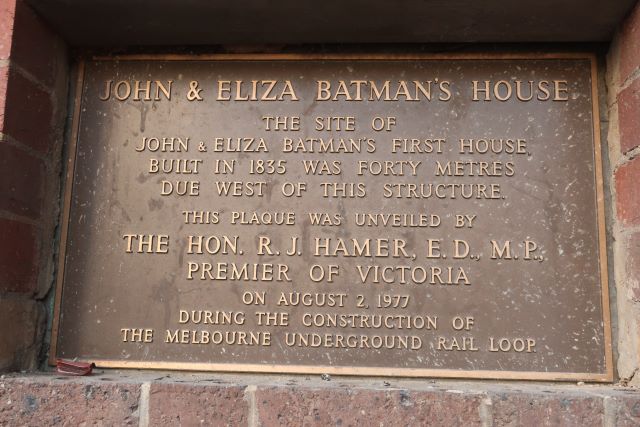
W.F.E. Liardet painted Batman’s Hill in 1875, one of his collection of watercolours looking back on the early days of settlement. The painting shows a verdant, treed slope with Batman’s house perched picturesquely on a fertile hill while the displaced First People are represented gathered in a corner near the River. The painting is available online from the State Library of Victoria website.
The restoration has been delivered by Lendlease as part of the Melbourne Quarter development.
The plaque is almost underneath the Spencer St railway viaduct where heavy trains rumble overhead. At this transport hub at the intersection of Flinders St and Spencer St the viaduct offered shelter to waterside workers from the rain. They would gather at what was known as ‘the wailing wall’ to be picked up or make their own way by bike to various jobs. The waterside workers had a nickname for every thing and every one.
Jim Beggs, the last President of the Waterside Workers Federation dedicated his time to improving conditions on the waterfront. He recounts the indignity and humiliation of the hiring practices on the waterfront earlier in the century. “Some of the foremen, if they had given out work dockets to all their favourites and still had a number of dockets left, would throw them into the crowd of remaining wharfies. There could be 500 men still waiting for work, and men who hadn’t had a job for weeks became desperate. … I saw the indignity of men pushing and fighting each other for the dockets that fell onto the dirt floor.“1
When Beggs started on the waterfront in 1951 the wall still had its place: “It was a place to let off steam about the shipowner, the stevedores, the government or the umpire who robbed your footy team on the weekend.” As more people started driving to work the importance of the wall as a gathering place faded. It was neglected – a place for bill posting and graffiti.
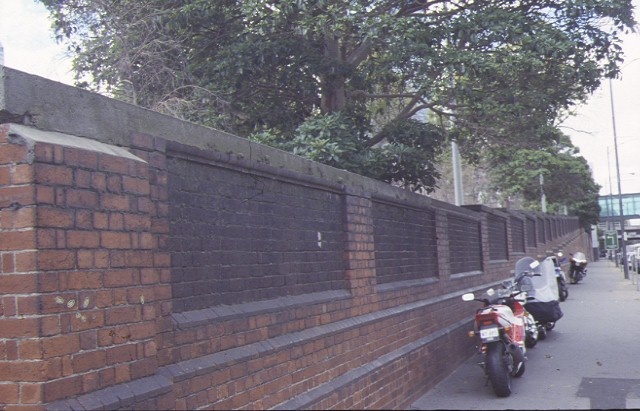
The brick wall has been impeccably restored. It can be viewed in all three dimensions. The Melbourne Quarter Tower arises several metres behind it. In this way it conforms to a principle of the Burra Charter for places of cultural significance that the old should be able to be clearly ‘read’ from the new.
Above the 5.5m brick wall, looms a tower of the Melbourne Quarter where a life of luxury is promised above the wall where workers once gathered desperate for work.
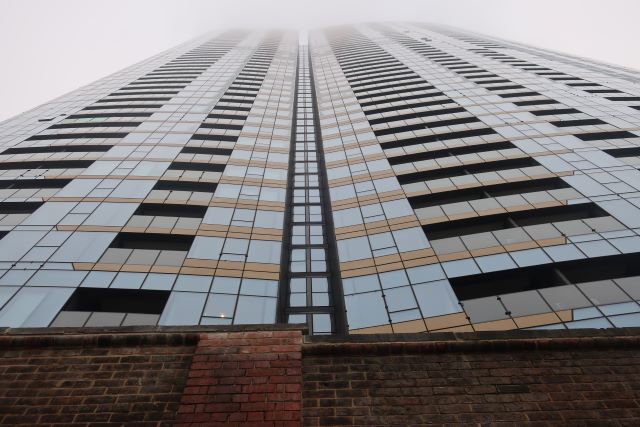
As part of Melbourne Quarter’s public realm contribution, a stair will ascend from Flinders St to Collins St, (or descend from Collins St to Flinders St).
I can’t wait to climb that stair, and will bring you news when I do.
More
Melbourne Quarter by Lendlease
1&2Jim Beggs Proud to be a wharfie (2014)
Andrew C Ward and Associates Docklands Heritage Study September 1991
State Library of Victoria W.F.E. Liardet John Batman’s house
The Burra Charter (2013) guides approaches to places of cultural significance. Article 22.2 says ‘new work should be readily identifiable as such, but must respect and have minimal impact on the cultural significance of the place.’
Where is this place?
2 Comments
-
-
JanetBolitho
Thanks for your comments Angelo. Good to know that you and Amy read the plaques around town. I thought it would be a whole theme for Port Places - to follow the thread from a plaque to the bigger story that lies behind them.
-


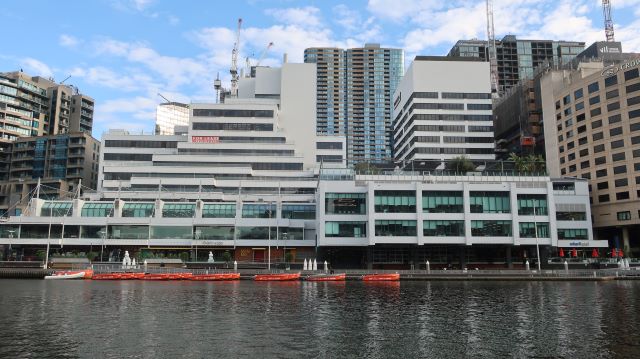
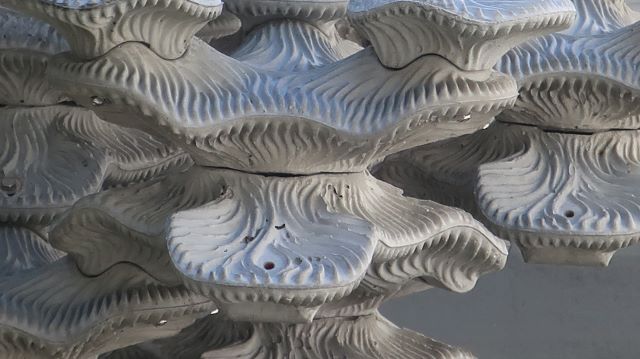
Angelo Indovino
Hello Janet, I was reading your email and clicked on "port places" to discover this interesting story. Well written and captivating - it transported me to a bygone era. I will go for a walk with my wife Amy one of these days and will look for the Brick Wall, the plaque, etc. I suggest you make the picture of the plaque full size so that it is more readable. My wife and I stop to read plaques wherever we go walking. Great work and well done. Regards ... Angelo